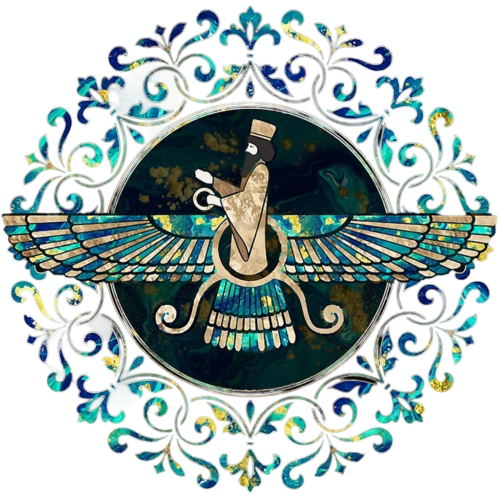Persian Carpet Designs
The design plates of Persian shop carpet designs can be classified in four categories based on the method they are executed by the designer. The first group are the designs, only a quartev
However, the second group is such that for weaving, half of the design must be available to the weaver in order to complete the design symmetrically and weave the carpet.
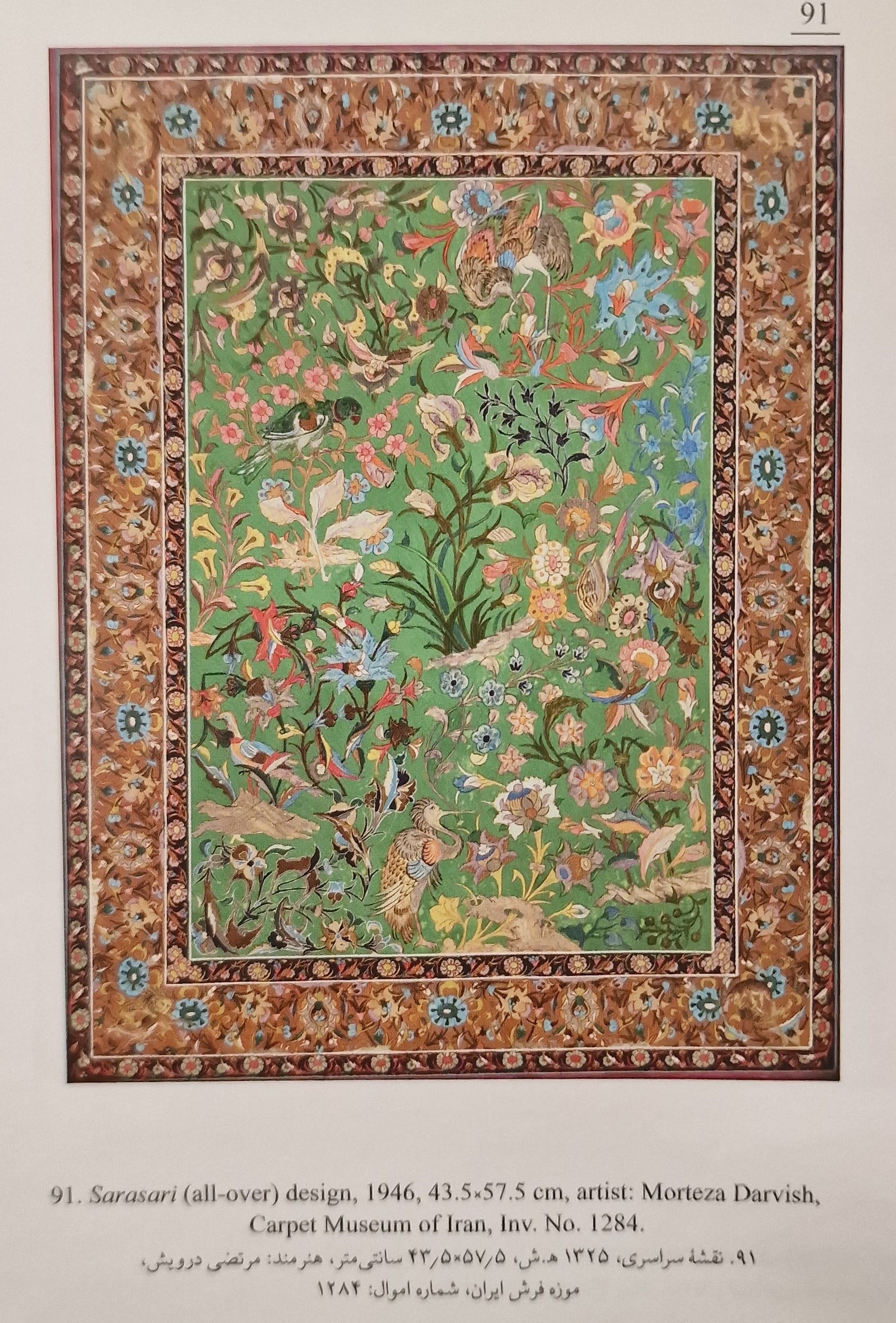
The third group of designs are such that for weaving, the complete or four-quarter design must be in front of the weaver to weave the carpet. Nevertheless, for the weaving of the fourth group of Persian carpet designs, only a small part of the whole design is needed, which is completed by its horizontally and vertically repetition in the fieldof carpet (figs. 94, 95). Based on the way they areexecuted, these designs are called yek-chaharom(quarter), yek-dowom (half), sarasar (full) and vagireh(repetitive) in the described order.( handmade carpet designs)
Weavers and designers in all three styles of Persian carpets take account of vagireh (repetitive) design. In this design, a very small design or simply a particular motif is repeated all across the field in particular arrangements, hence making a design consisted of a repeated pattern known as vagireh. This means that designers and weavers can use vagireh to produce carpets in different sizes.
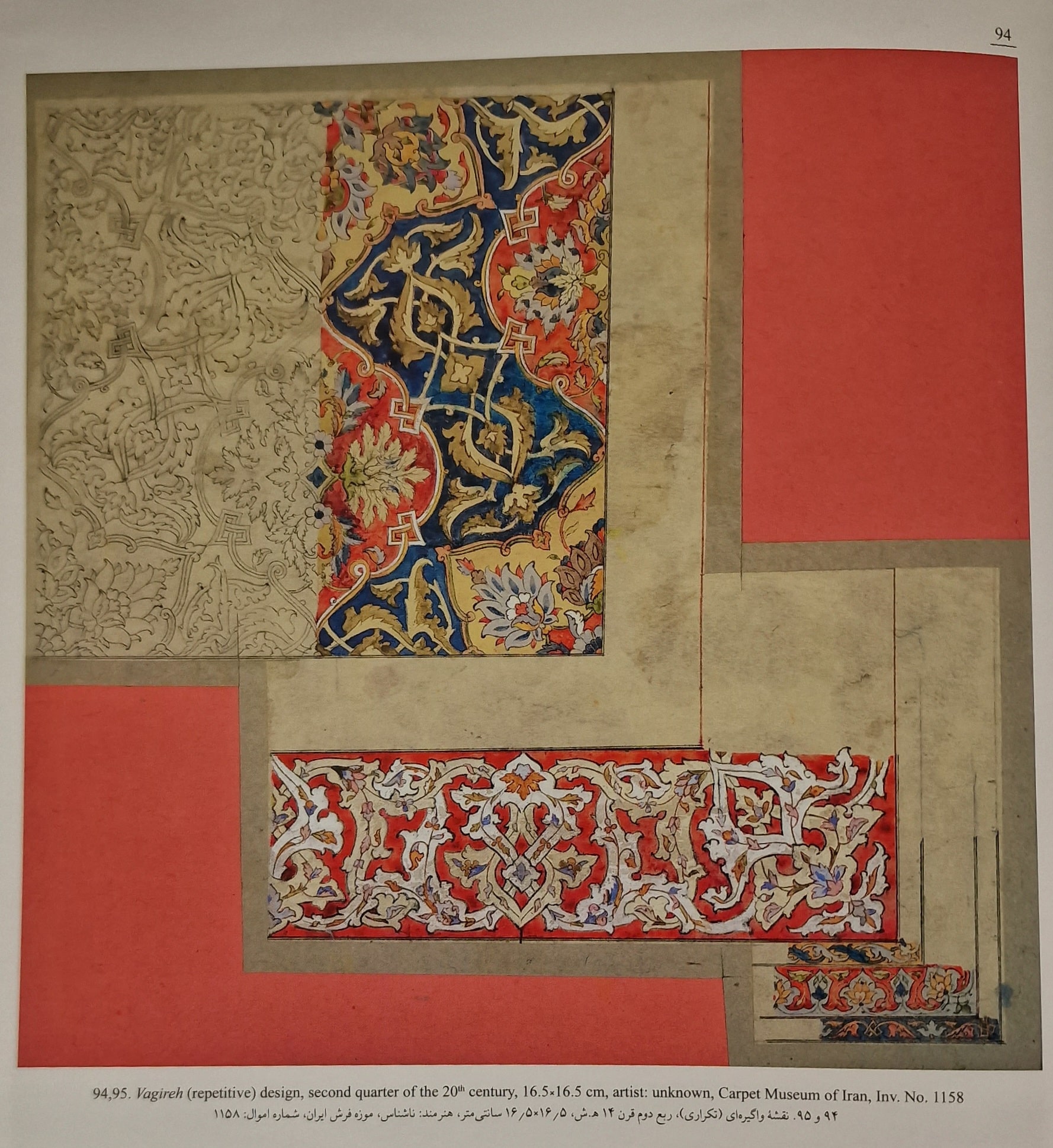
Based on their general structure and main elements of the design, machine carpets‘ designs are divided into 12 categories. Almost all of the rural, tribal and town designs are included in these categories. The correct method of naming these designs is to recognize the category of the design and then putting the name of the pattern that’s dominating most of the design as a suffix to design’s name. Names such as Shah Abbasi medallion-corners, eslimi afshan, etc. are made using this method.’
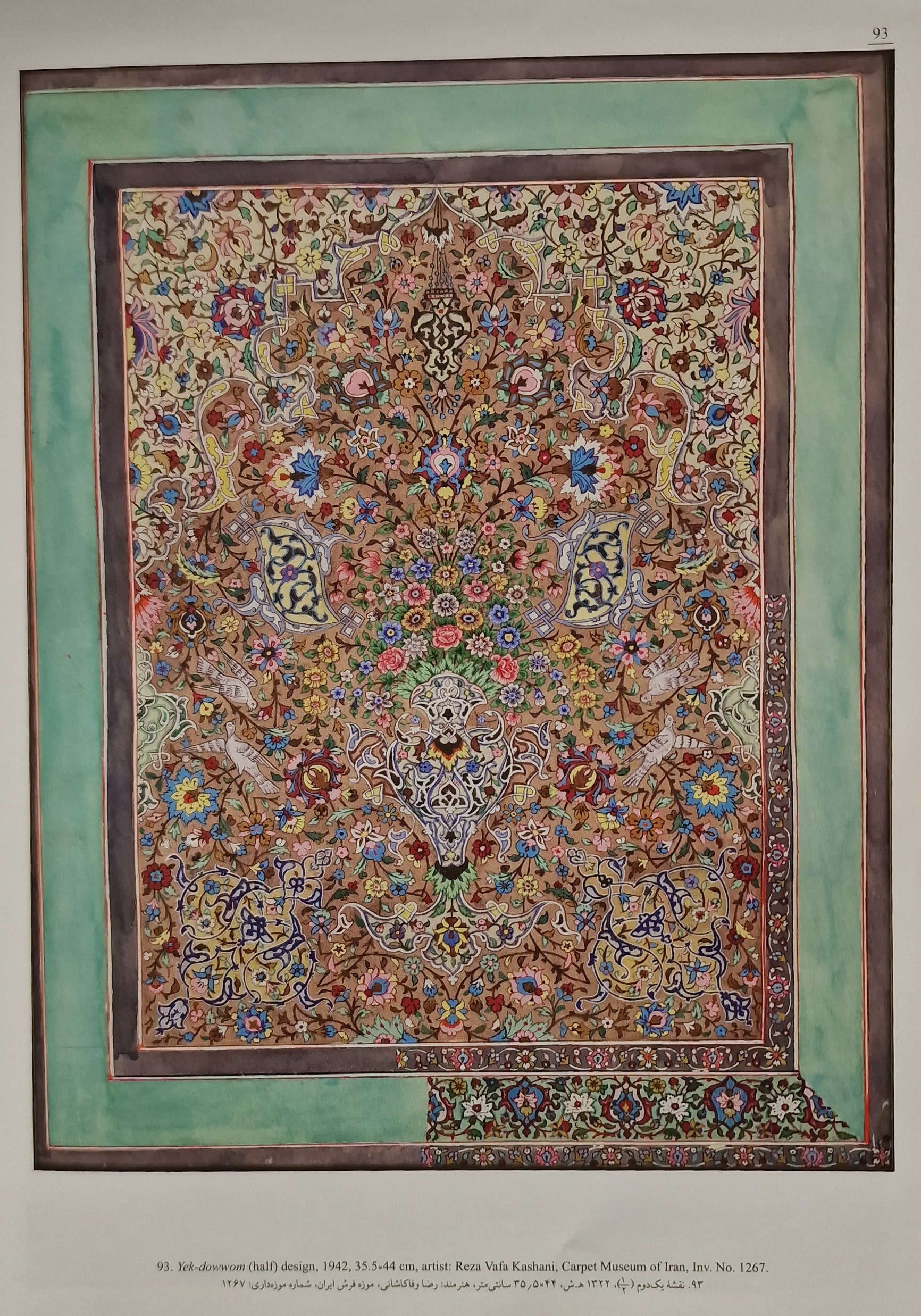
Lachak Toranjand Toranji Carpet Design
Lachak Toranj (Medallion Corner) and Toranji (Medallion) Design This design includes a toranj (medallion) in the center, with triangular lachaks (quarter medallions) at the corners of the field.
In some cases, the design may lack lachak patterns, in which case it is called a toranji design. Some have two or three or even more medallions. They are called se-toranj or toranj toranj. Lachak toranj (medallion corner) is one of the most popular silk carpet designs and is commonly used by designers in all weaving centers. Shah Abbasi Lachak toranj, eslimi Lachak toranj and golfarang (European flower) Lachak toranj are among the most famous designs of this group.(Persian carpet designs)
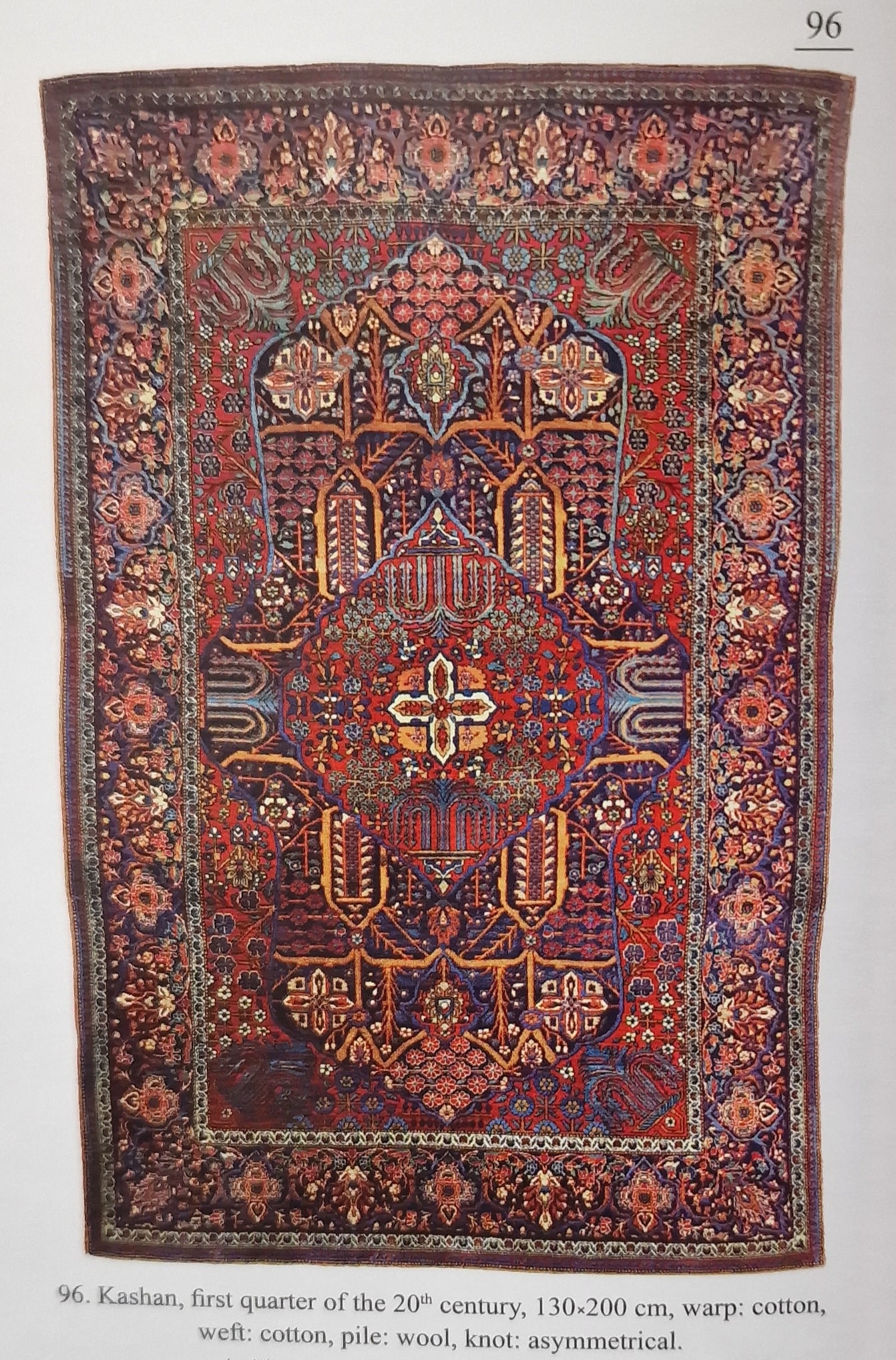
Some carpetologists believe that toranji designs are inspired by baghi (garden) designs. They believe that the medallion at the center of these carpets is the equivalent of the big pond or pool at the center of baqi designs. This idea is accepted by many, thus names such as hozi (pool), yek-hoz and dohoz are used instead of toranj in some areas such as Chaharmahal & Bakhtiari, Kordestan, Lorestan, etc.. The term hozi is still used in Iran and is a part of carpet literature in particular areas.(Persian carpet designs)
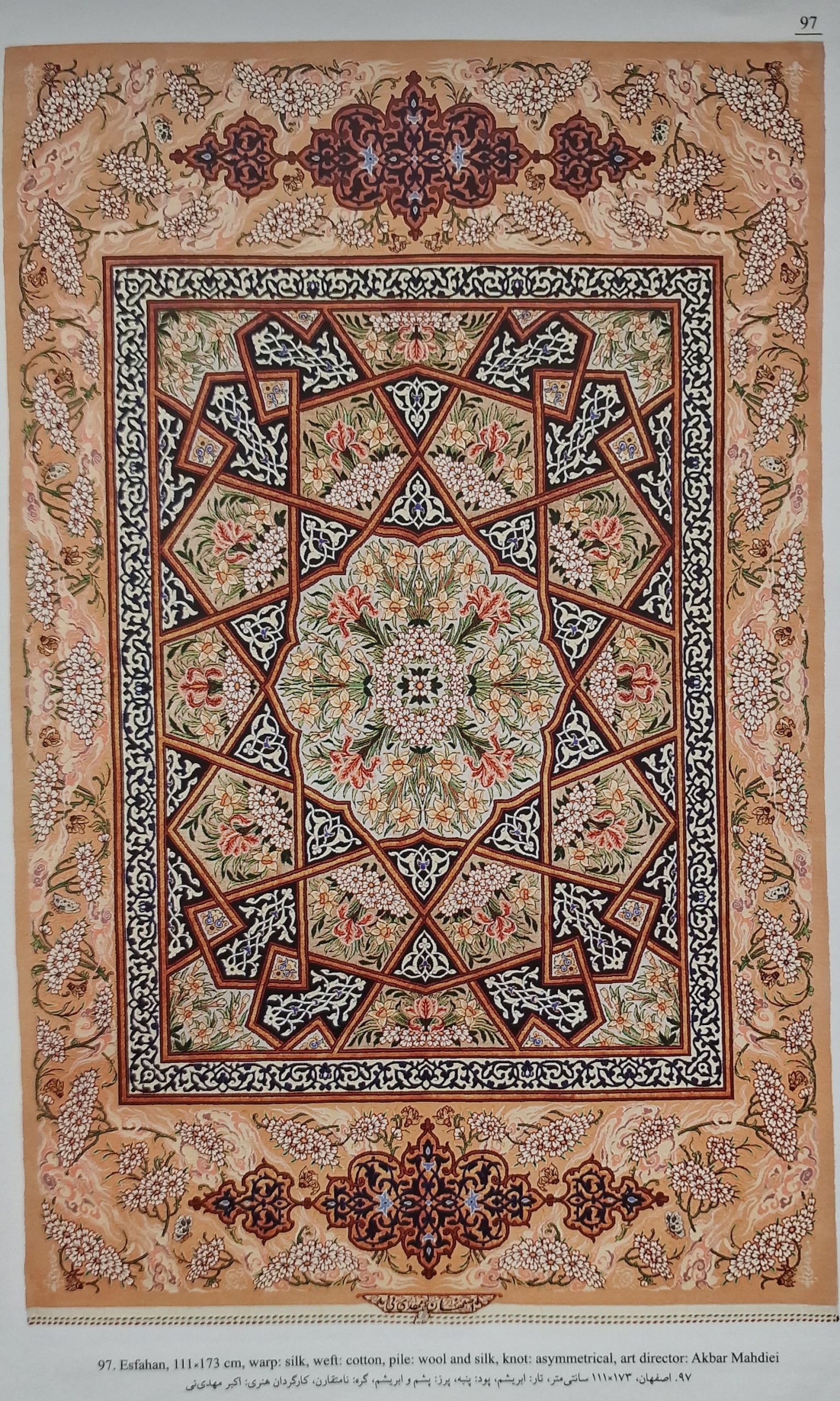
Afshan (Sprawling) Carpet Design
The structure of this Afshan (Sprawling) Design is such that all the designs and their elements are scattered throughout the field; in other words, they are sprawled. In this design, no
symmetrical pattern is used, and for this purpose, there may be differences in the color of the symmetrical parts or patterns of the design.(Persian carpet designs)
That is why in most afshan designs, the whole design should be drawn and painted before being given to the weaver. Some of the oldest and well-known afshan designs can be found in Herat carpets of the Safavid era. Shah abbasi afshan, floral afshan, animal afshan are famously known among afshan designs.

Afshan (sprawling) or full designs, as the name implies, should indicate designs that do not have symmetry, and patterns are scattered on the field. However, Iranian carpet designers have tastefully created afshan designs in which symmetry has not been much observed, but the overall structure of the design beautifully induces such a model.(Persian carpet designs)
There are yek-dowom (half) and yek-chaharom (quarter) designs that may only be categorized as afshan. Figure 104 is an example of such designs.
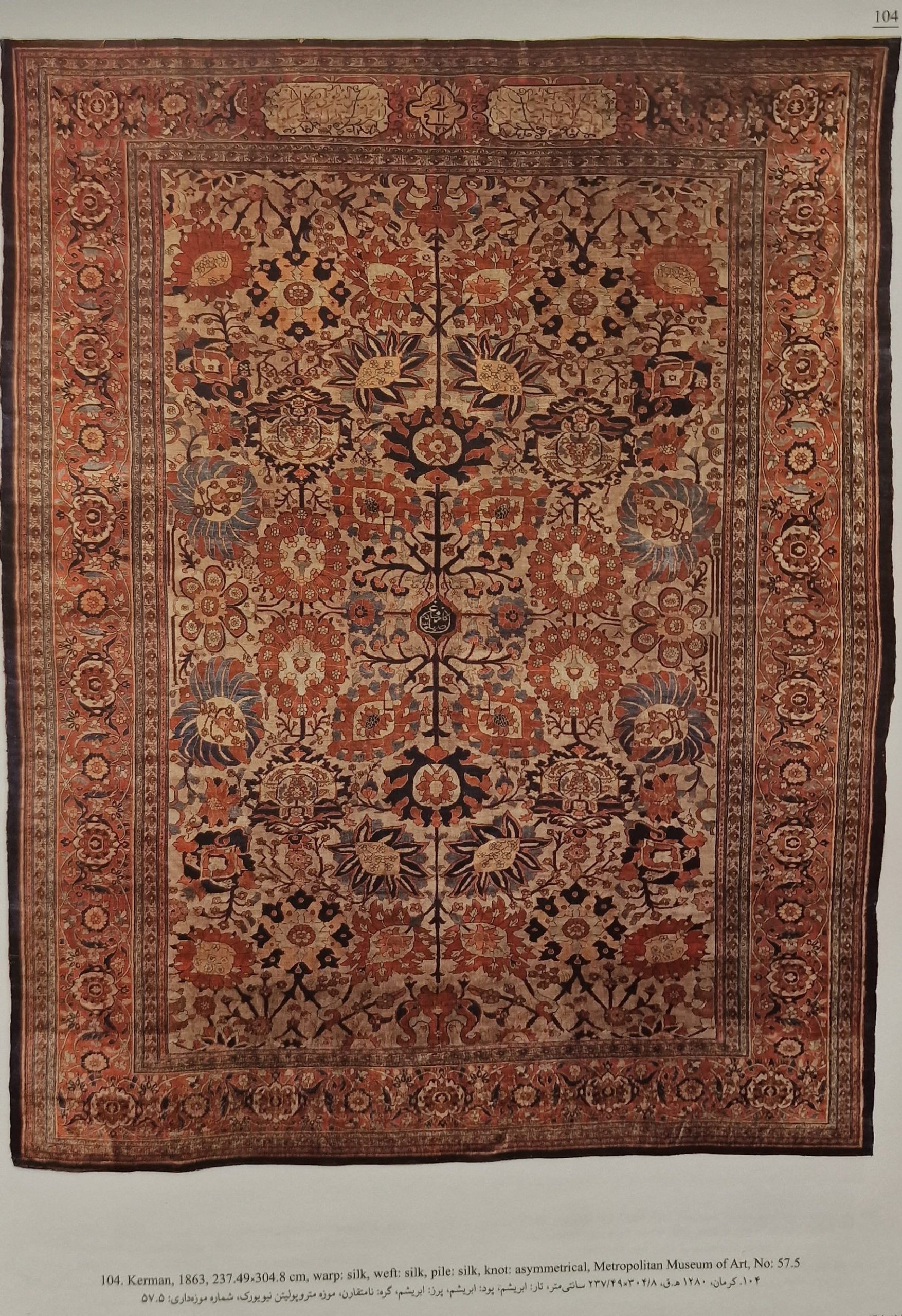
Baghi (Garden) Carpet Design
Baghi designs are inspired by the architecture of Persian gardens and its special divisions, and it seems that we are watching a garden from the sky. The designs of this group often have a large pond or pool like a toranj (medallion) in the center of the design, from which streams of water are drawn to the sides, leading to smaller ponds.(Persian carpet designs)
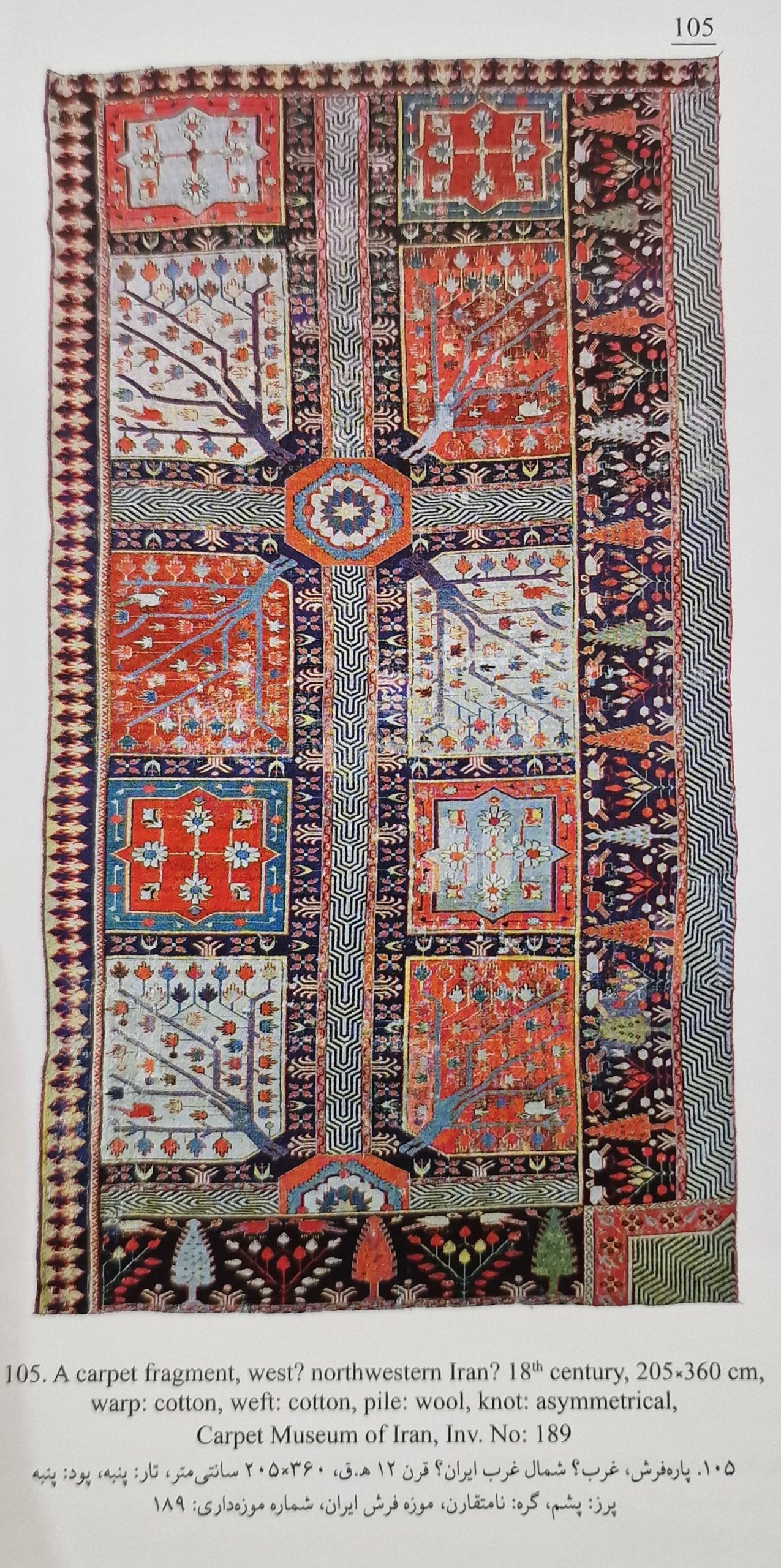
In some baghi designs, fish can also be seen inside streams, and on all four sides of the large central pool, there are four trees, most of which are weeping willows. The most important old carpets with this design, which are more than one hundred years old, are mostly attributed to the west and northwestern Iran.
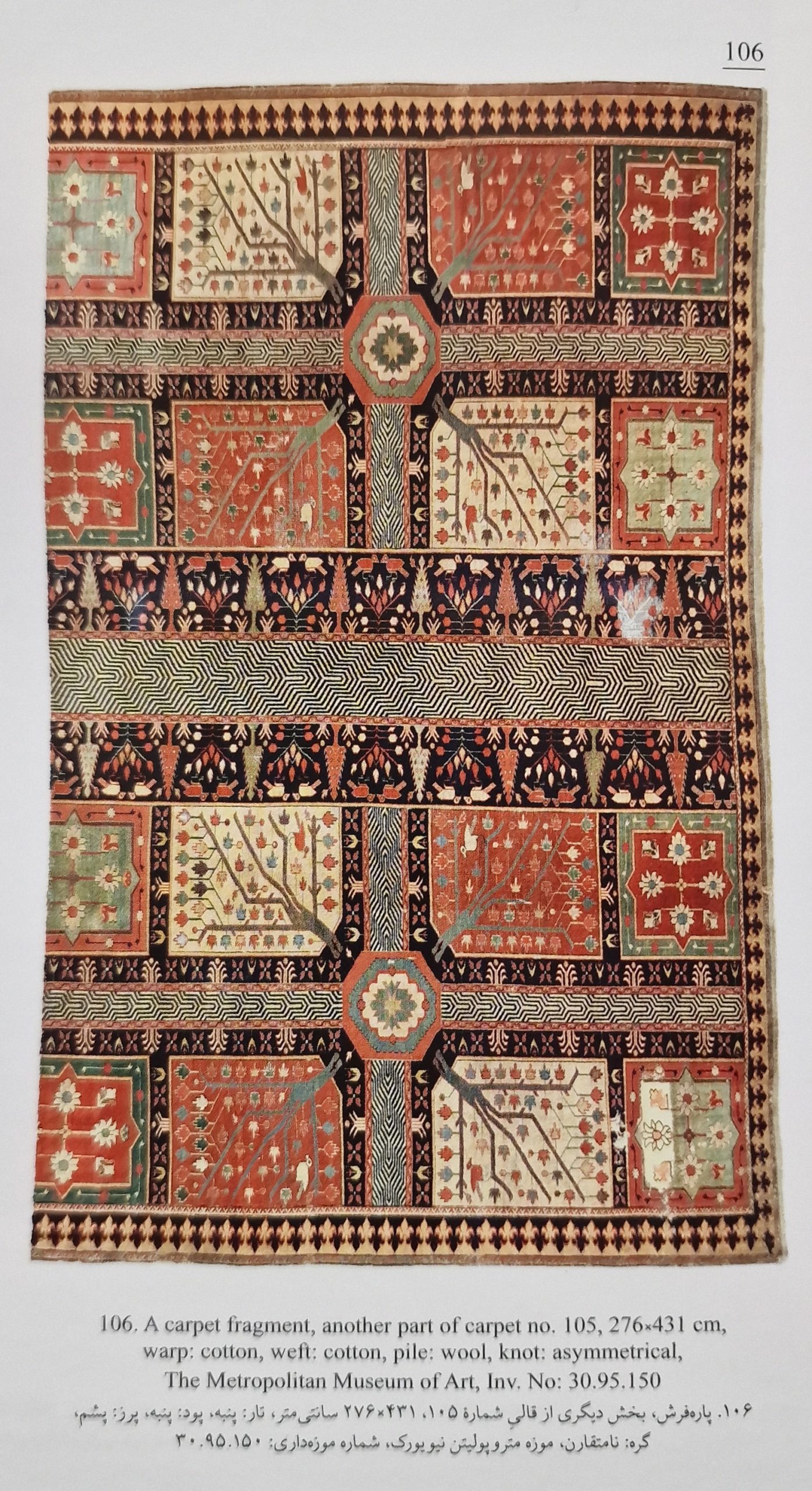
Moharramat (Striped) Carpet Design
The field of all carpets woven with this Moharramat (Striped) Design consists of narrow and wide, parallel strips that vertically cover the entire field of the carpet. Fars provinces, as well as the village of Dorokhsh in southern Khorasan, are two important and old areas whose carpet weavers were very interested in using this design.
Except for the designers and weavers of Qom, this design has received less attention in the Persian carpet in recent decades, and most of the available samples belong to the years before the 1970s.(Persian carpet designs)
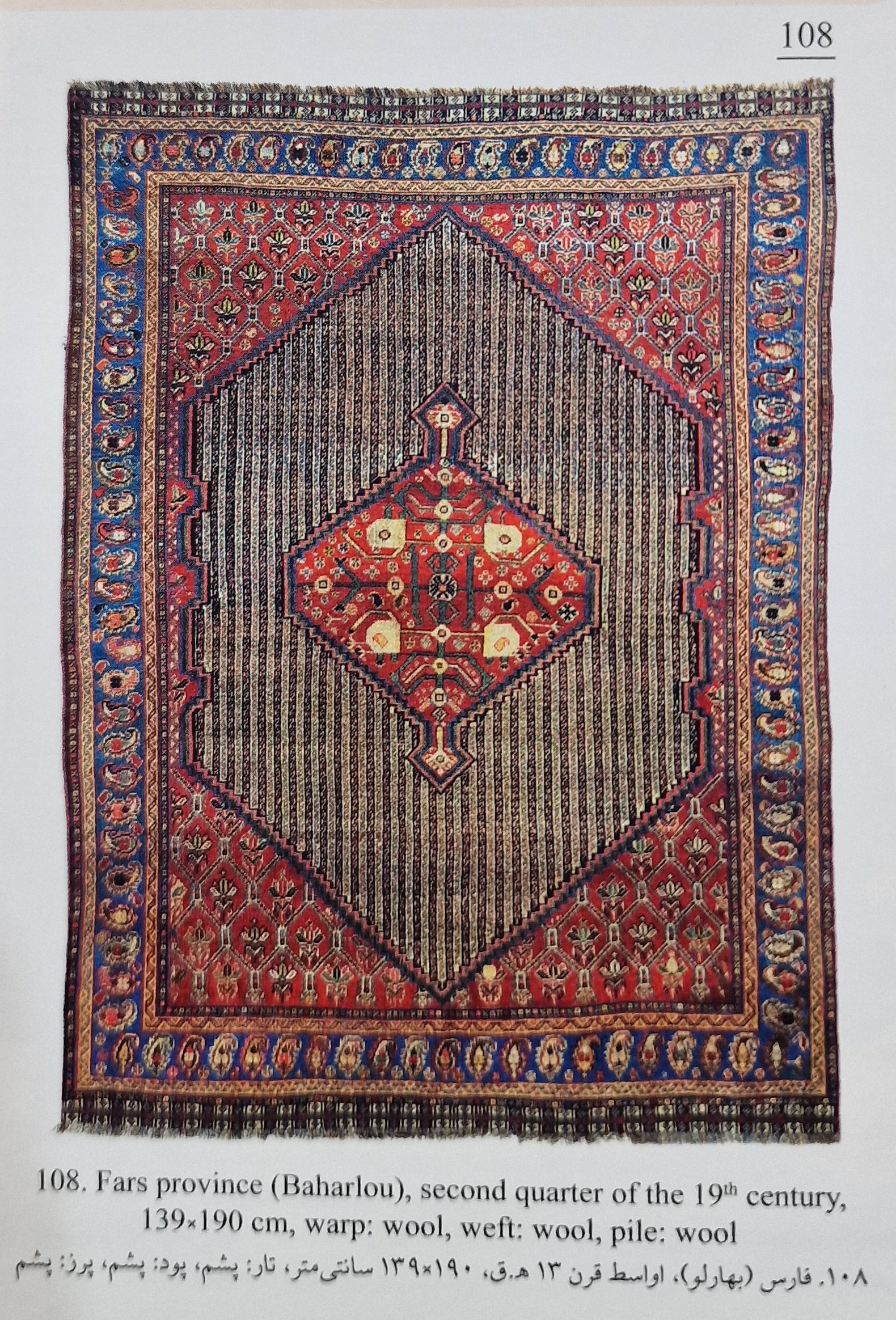
In most of the examples seen in this group, the method of combining with other designs, especially toranji designs, has been predominant. The boteh-ei moharramat is one of the most famous examples of this group. The literal meaning of moharramat and the reason for its application to striped carpets is not clear.
After the rise of Islam, the striped fabrics were called moharramat, and in Kashmir and Pakistan, which have long been under the cultural influence of Iran, the striped cloth and shawl are called mahramat. Some examples of fabrics with the design of moharramat have remained in Tabarestan and Mazandaran from the 9th and 10th centuries.
This design was very popular in the Safavid era (16th and 17th centuries) and can be seen on many textiles and even paintings left over from that period.
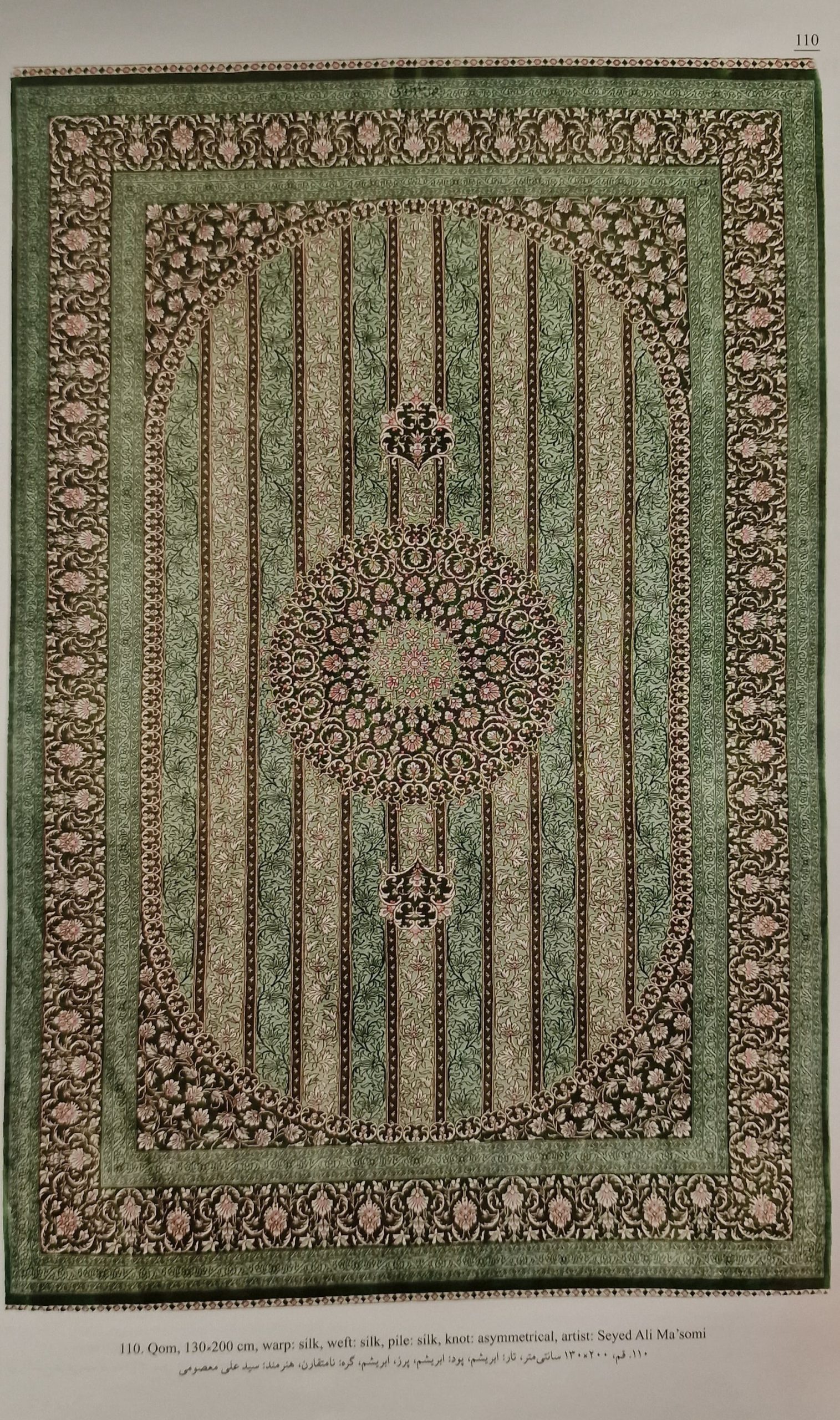
Derakhti (Tree) Carpet Design
The main motif of this Derakhti Design is a big tree with many flowering branches covering the field of the carpet. This design is mostly found on carpets whose area is less than 6 m². This design is popular among Persian carpet designers and weavers. There are tribal, workshop and rural carpets with this design.(Persian carpet designs)
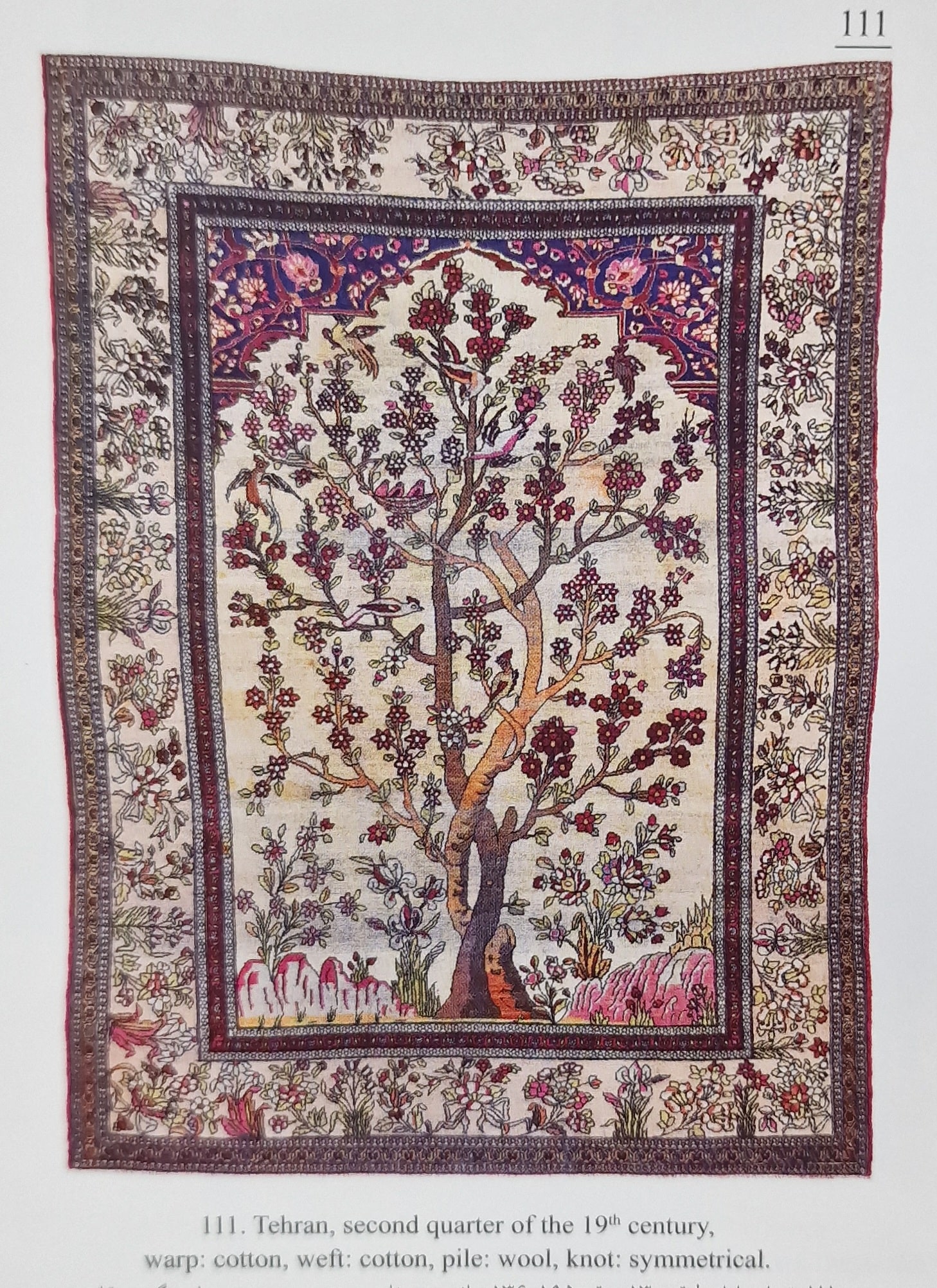
Workshop weavers of Kashan and Kerman have made some memorable pieces with this design. Also tribal Balouch weavers in Khorasan and tribal Qashqai weavers of Fars have a special way of implementing this design on their carpets which is quite famous.
The tree has an important place as an important theme in the thoughts and beliefs of Iranians, both in the form of a design and as a motif. The tree has an important place in the thoughts and
beliefs of Iranians, both in the form of a design and as a motif. Among these, several trees with more emphasis have been considered, which respectively are: cypress, weeping willow, pomegranate tree, vine tree and Tuba, which is a sacred, mythical tree believed to grow in the Muslim paradise and bears different kinds of fruits. Se-kondeh tree is also popular among the weavers of Fars province.
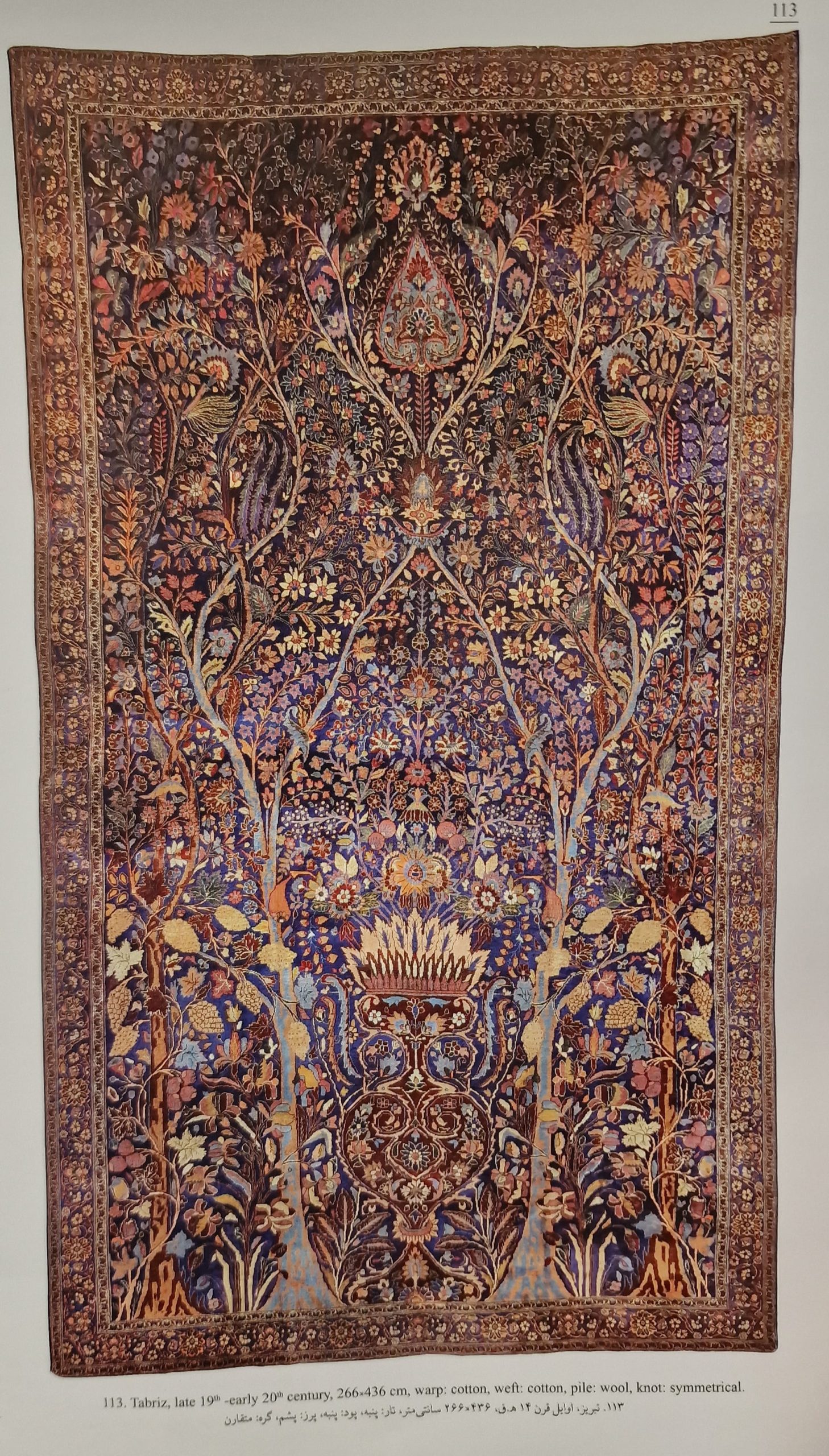
Goldani (Vase) Carpet Design
From the structural point of view, this Goldani (Vase) Design is much like derakhti (tree) design. The only difference is that instead of a tree, there is a vase on the field of the carpet with flowering branches coming out of the vase which cover the entire field in some cases.
Sometimes, this design is combined with a derakhti or mehrabi (prayer niche) design. Golfarang (European flower) goldani (vase) is a very common sample of goldani designs.
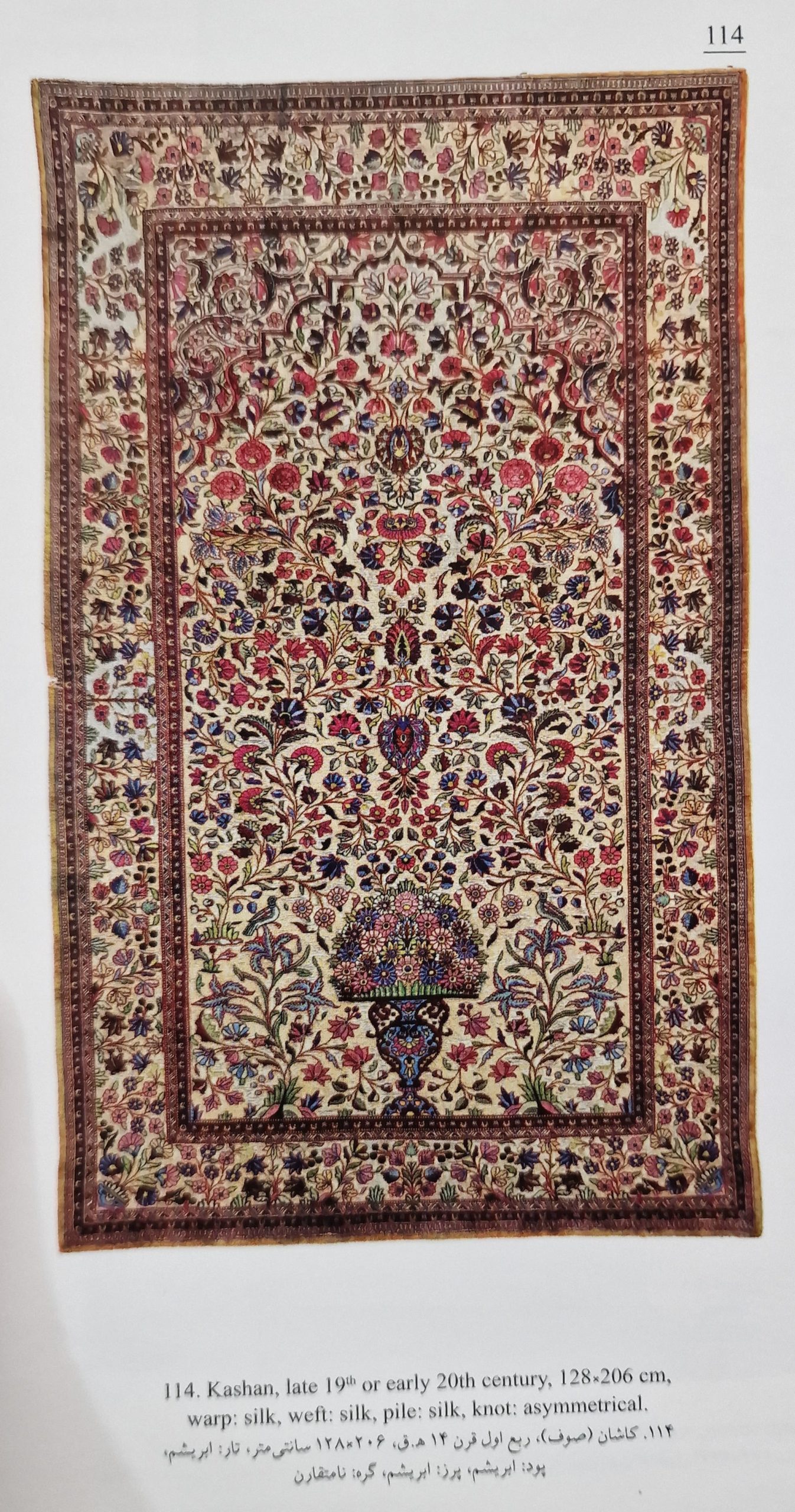
Mehrabi (Prayer Niche) Carpet Design
As its name suggests, this carpet is inspired by the shape of mehrabi of mosques, churches, etc.. The significant features of these designs which can be found in most carpets with this design, are two pillars on each side of the field and an arch with an embowed shape on top of the field. In some instances, there is a chandelier hanging from the arch.(Persian carpet designs)
In recent decades, this design hasn’t been as much used by designers and weavers as it used to be. In most cases, mehrabi designs are used in combinations with goldani and derakhti designs. We don’t know why mehrabi design was deflected against goldani and derakhti.
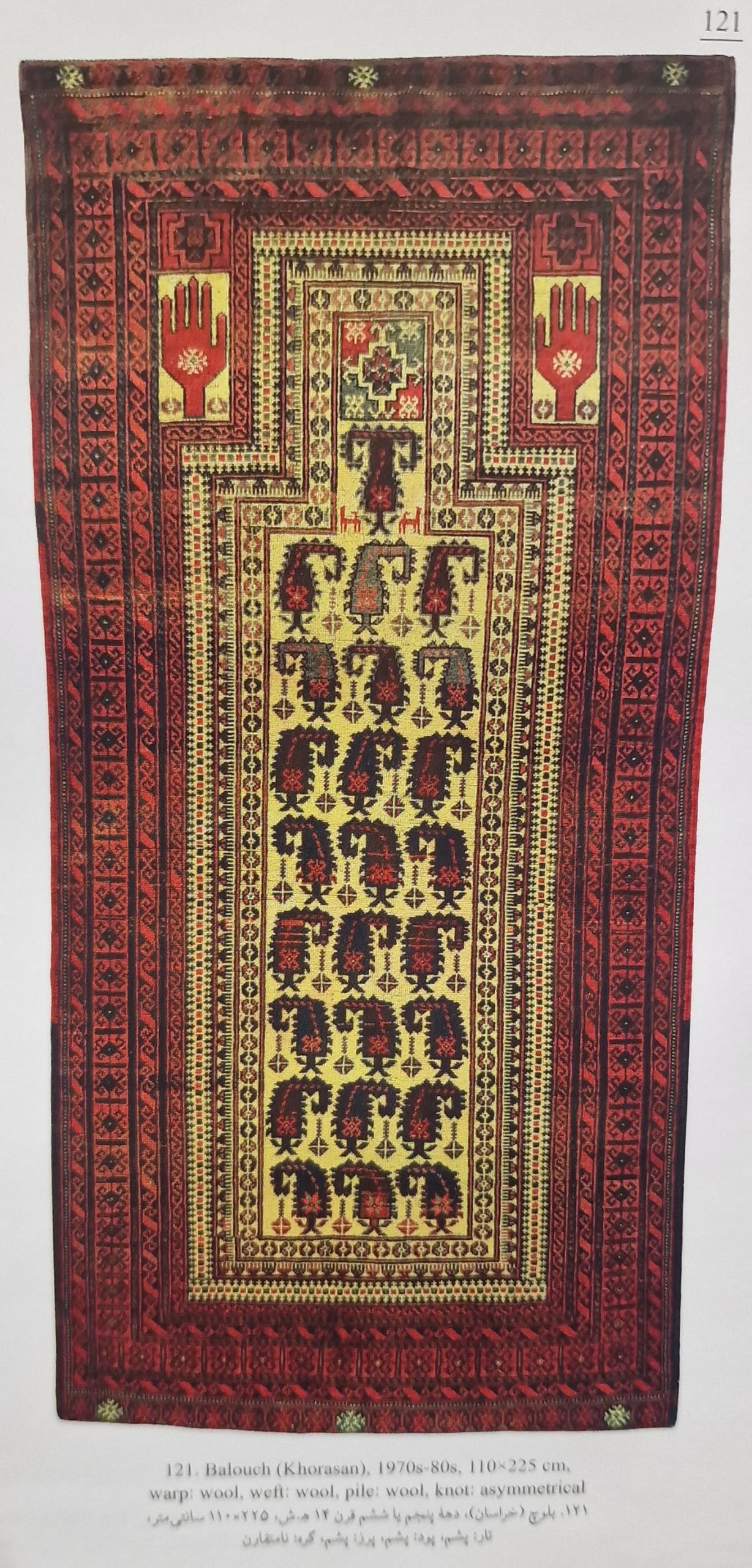
By inspecting the oldest pieces of this design, we guess that its deflection probably started back in the Safavid era. The reason that we cannot study the contemporary mehrabi pieces is that they lack the main features that we are familiar with. Features such as 2 pillars on the both sides of the field which are mostly blurry, along with the niche on top of the field which in most cases appear more like a curtain rather than a niche.
In most samples, there is a window or a doorway which opens to landscapes of nature or a porch instead of that. Some interpret this as a window to heaven.
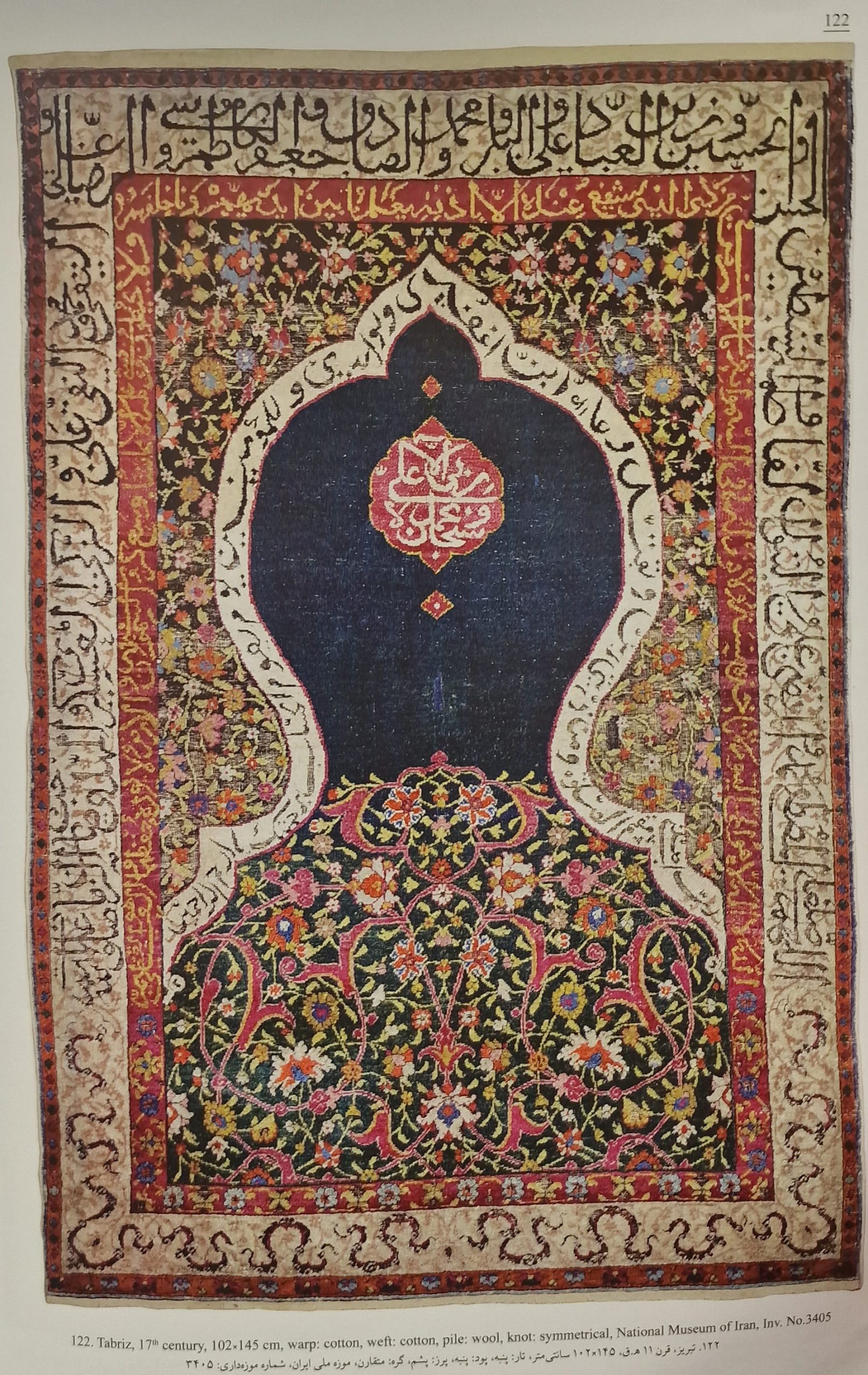
Repetitive or Vagireh Carpet Design
The Repetitive or Vagireh Design of the carpet in this group of rugs is based on a repetitive pattern that can be of different types and in different dimensions.
Sometimes a small or a large motif, and sometimes a set of motifs placed beside each other in a frame, may be repeated throughout the field, and so creating a unified design based on the repetition of a single pattern. The famous qabi design, which is also known as kheshti and is drawn in different shapes, belongs to this group.(Persian carpet designs)

Jangali (Jungle) Carpet Design
The name of this Jangali Design speaks for itself. It is a visualization of a jungle. We expect to see animals and trees while looking at a jungle and this design meets our expectations.
Many trees, animals and birds (which are the main motifs of the field in this design) can be seen while looking at carpets of this group of designs. Jangali design has also faced a decrease of popularity among designers and weavers in the past few deca des.
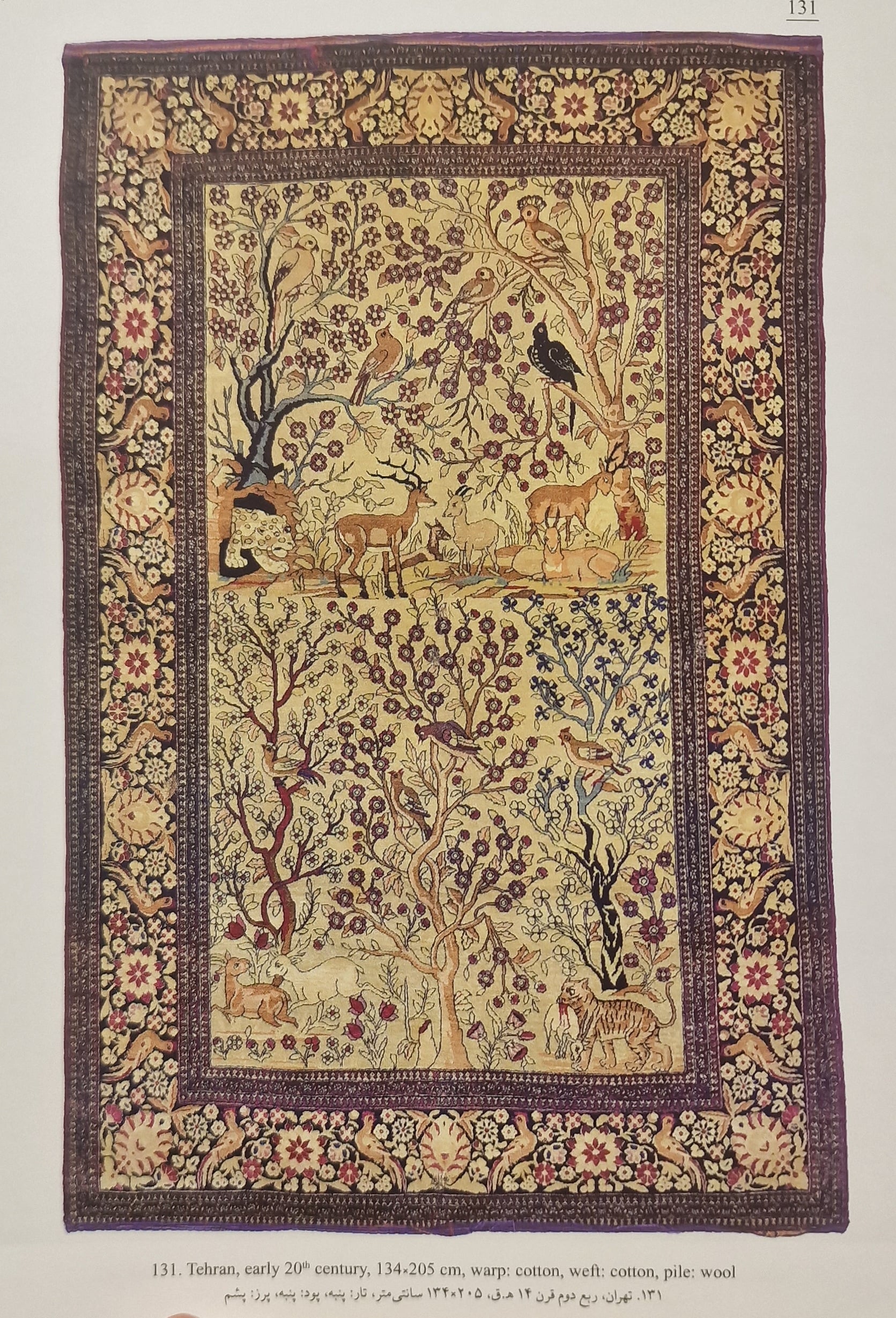
Shekargah (Hunting) Design
In the Shekargah Design of this carpet, different people are visible, whether on foot or mounted, carrying a weapon such as spear, bow and arrow, mace, etc. who are normally hunting. In some old pieces, one of these people is bit bigger than the rest and draws more attention.
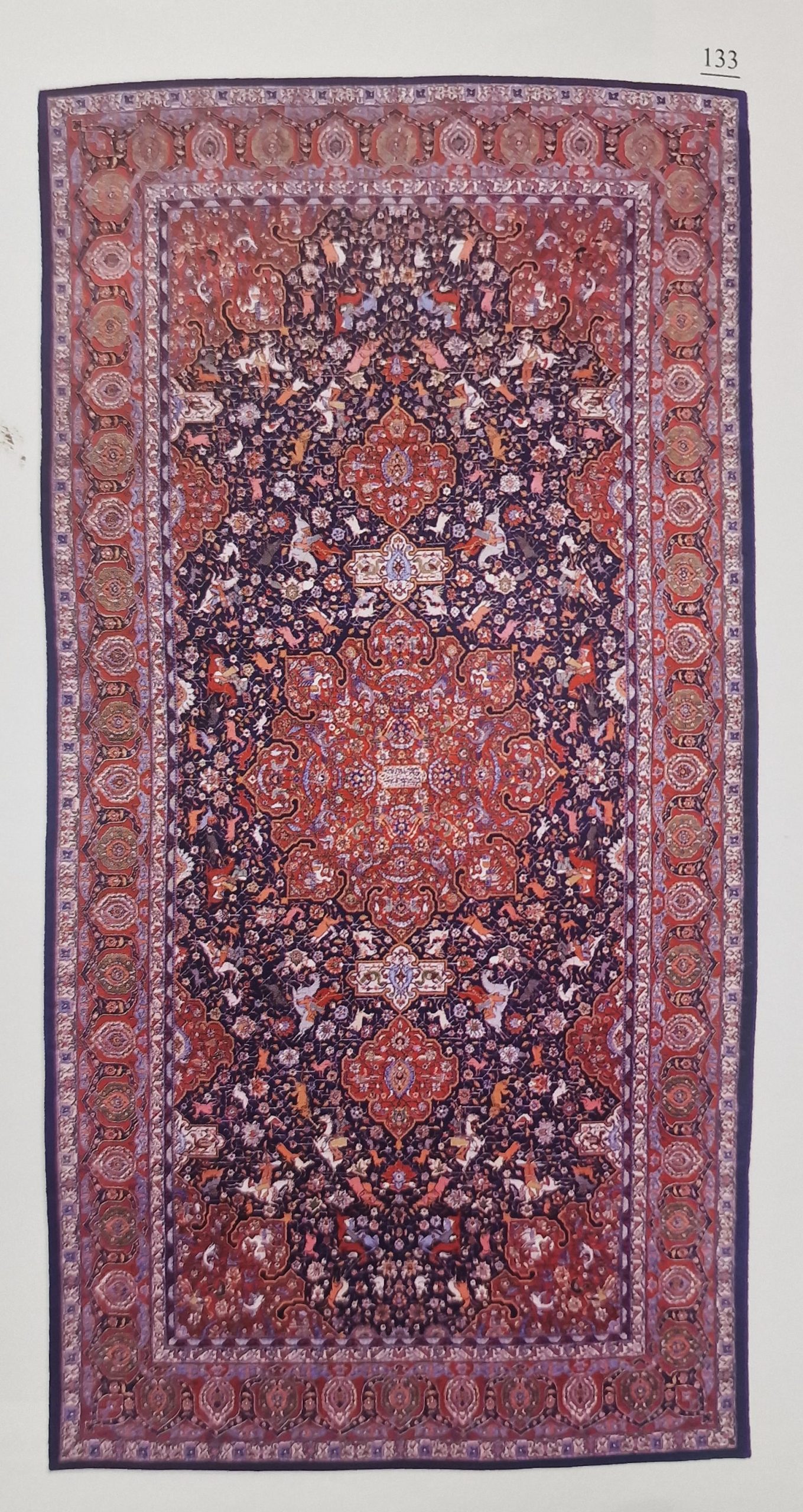
This indicates the superiority of that person, whether he is the king or the leader of the hunting ensemble. Shekargah (hunting) design is one of the most famous designs of Persian art, the oldest examples of which can be traced in the bas-reliefs remained from the Achaemenian era. There are pieces left from the Safavid era, which indicate the importance of this design during this era.
Paintings from the Safavid period have also been a good source of inspiration for carpet designers of that era and later centuries to transfer this design to the carpet with different tastes.
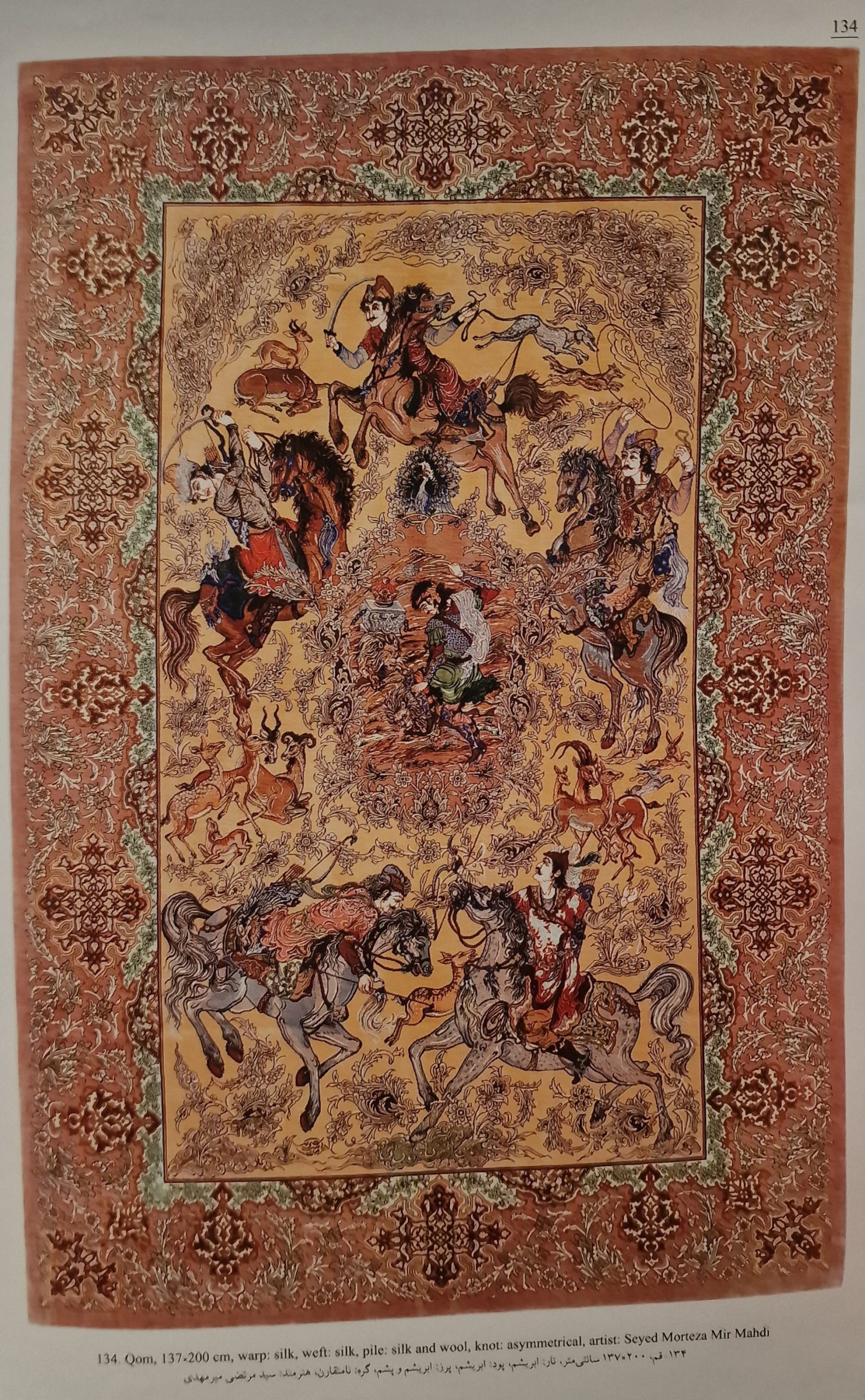
Tasviri (Pictorial) Design
Tasviri designs, according to their names, represent the landscape, the image of people or subjects that resemble a photograph or a painting; therefore, they are also known as pictorial carpet in Persian carpet literature.(Persian carpet designs)
The full-sized portrait of people, especially those of famous people, or just their faces has been highly regarded by weavers and designers of old Persian carpets. In recent decades, images of landscape and the Persian miniature painting have
been more used in tasviri designs.
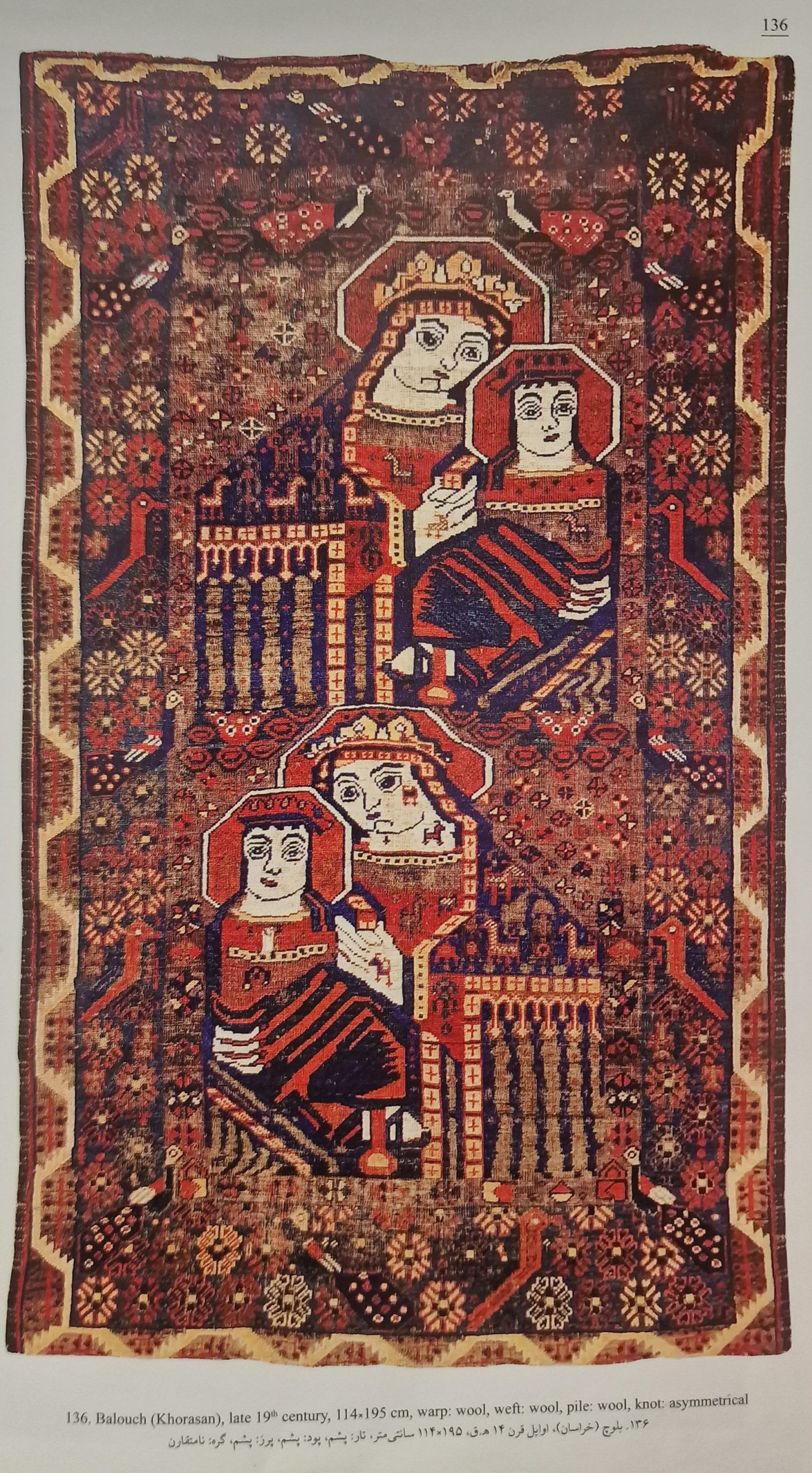
Talfiqi (Combination) Design
The name of Talfiqi (Combination) Design a good indication of its structure. In other words, it is a combination of two or more designs from different groups. For example, the combination of toranji (medallion quarter) and tasviri (pictorial) carpet designs, mehrabi (prayer niche) and derakhti (tree) or goldani (vase) designs leads to the creating of a new design, namely talfiqi.
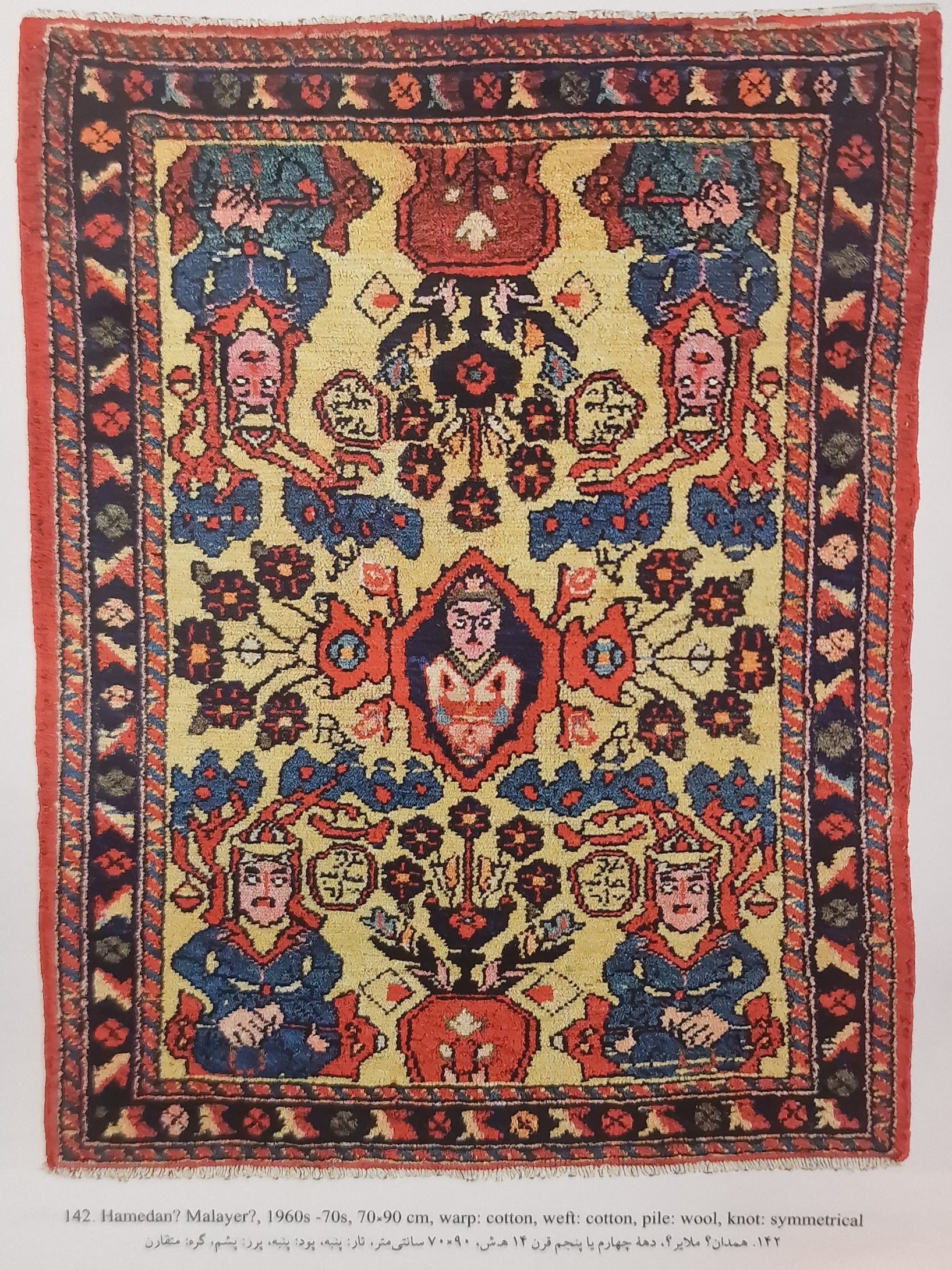
In naming each design, the name of the dominating design comes first and the name of the subordinate pattern comes secondly as a suffix. For instance, if a toranji design is combined with a shekargah (hunting) design and dominates most of the field, the whole design would be called toranji-e talfiqi, talfiq ba shekargahi (talfiqi toranj combined with shekargah design).
